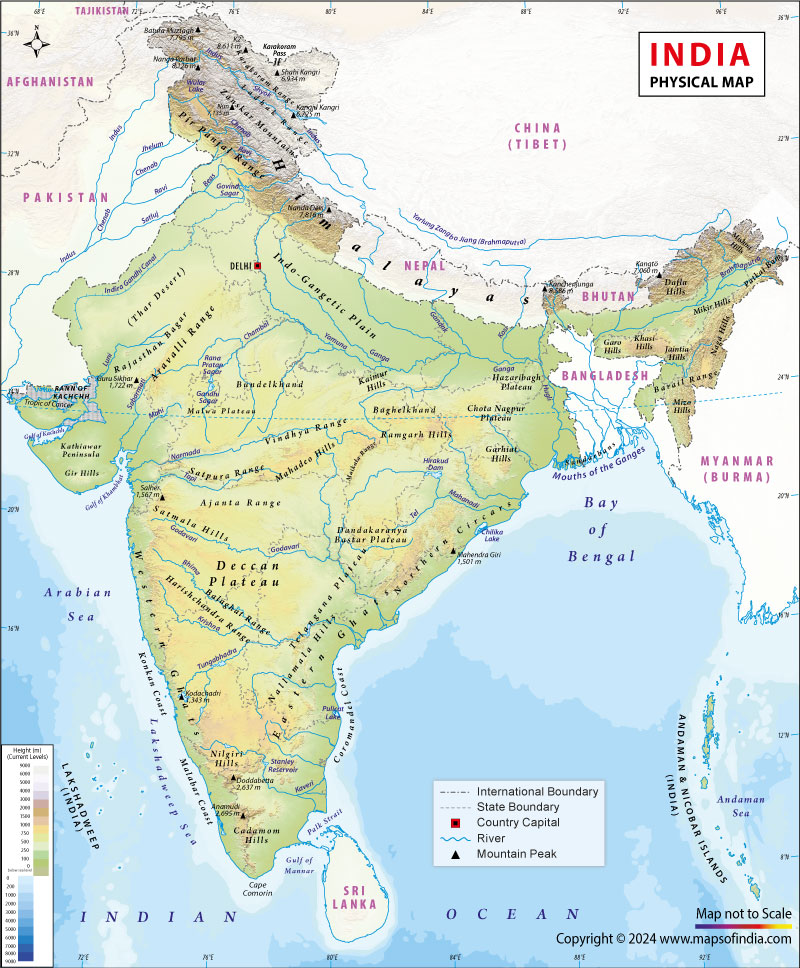North India rivers are Indus and its tributaries Jhelum, Chenab, Ravi, Beas, Sutlej. The Ganga and its tributaries namely Yamuna, Gharghara, Gandak, Ram Ganga, Ramganga, Kosi, Mahananda, Chambal. The Brahmaputra and its tributaries like Manas, Subarnasri, Tista, etc.
South Indian rivers are the Narmada, Tapi, the Mahanadi, the Godavari, the Krishna, and Kaveri and their tributaries. Also read,
major rivers of South India.
Differences: A comparison between the North Indian rivers and south Indian rivers has been done in this articles. The top 10 differences are given below:
1. Snow fed or Rain fed: North Indian Rivers are snow-fed river and well as rain-fed. But the South Indian Rivers are only rain-fed.
2. Course: North Indian Rivers are subjected to drastic change of courses particularly after the landslides and earthquakes. But the South Indian Rivers rivers flow through stable region and do not change their courses.
3. Drain areas: The drain area of North Indian rivers are geological unstable and form meanders. Whereas the drain areas of South Indian Rivers are geologically stable and are devoid of meanders.
4. Suitability for Hyder power generation: The Himalayan Rivers are not suitable for the production of hydel power though their sources are in the Himalaya. But the South Indian Rivers are suitable for the production of hydel power as they are swift flowing along rugged terrain.
5. Settlement of towns and cities: A large number of big towns and cities are situated on the banks of the rivers of Northern India. But a few towns and cities are situated on the banks of the South Indian Rivers.
6. Stages: Most of the North Indian Rivers have distinct three stages in their course of flow – the upper, middle, and lower courses. But most of the South Indian rives have only two stages in their course of flow.
7. Navigability: The middle and lower courses of these rivers are navigable for long distance. Most of the South-Indian Rivers are swift flowing and they are navigable only at the lower course.
8. Flood and deltaic plains: All the North Indian rivers have developed a vast fertile flood plain. And the river Ganga has formed the largest delta at its mouth. But the South Indian Rivers have made only deltaic plains instead of flood plains.
9. Sources: All the North Indian rivers have their sources at much higher altitude especially in the Himalayas. But the South Indian Rivers have their sources at much lower altitudes. Also read,
Major Rivers originating from the Himalayas.
10. River flow: In winter their flow continues and is enhanced by water from the melting snows and glaciers. Whereas the flow of the South Indian rivers reduced to minimum in winter.


Comments
Post a Comment